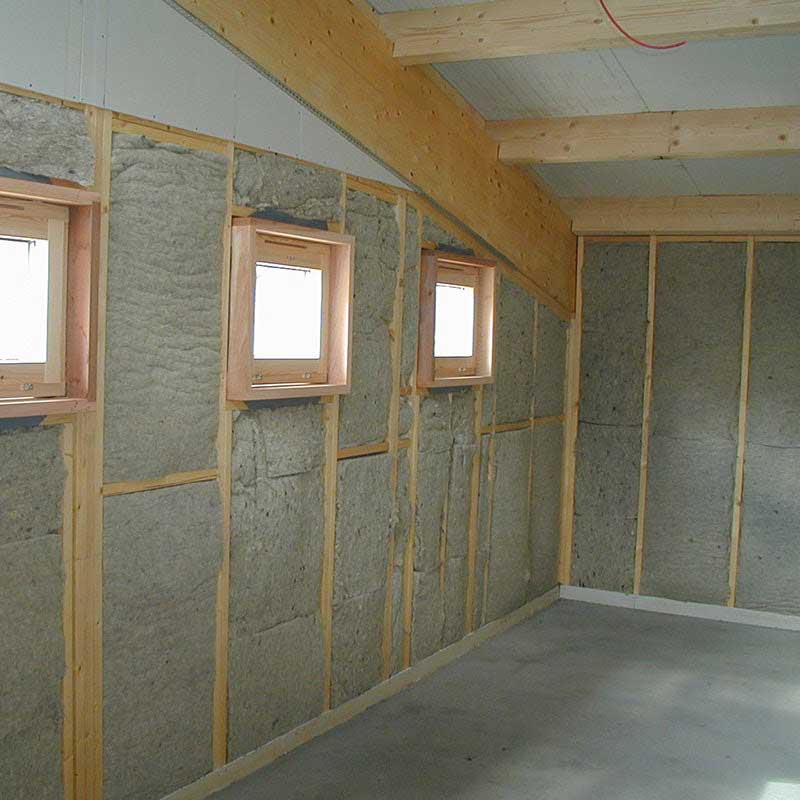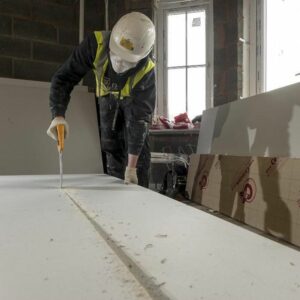Cavity walls are the most common walls in homes in the UK.
Did you know that double-skin properties were first built around 1920?
So, if your home was built after that, then it’s more than likely got an inner wall, an air gap and then an external wall. As a result, this space can be insulated with a range of types of insulation.
But if you have a solid wall, made of 50cm bricks, for example, there are other options for you. Read our guide on insulating a wall to learn the methodology and which is best for your insulation plan.
Of course, it’s not just walls that can be insulated. Insulating your entire home comprehensively, including internal walls, can ensure your home is the most energy-efficient and it’s cosy too.
What’s more, insulating your home well will reduce heating bills too, so it’s an all-round win-win.
Table of contents:

What types of insulation are there?
There’s a vast array of insulation types available in the construction market today, but it’s only domestic insulation that homeowners need to consider.
The thing is:
Industrial-grade or high-level acoustic insulation would be too costly and just too much in a three-bed semi.
Types of domestic insulation include insulation board, roll insulation, batt insulation (also known as insulation slab), multifoil insulation, acoustic insulation, and insulated plasterboard too.
How do they compare?
Below, we’ll break down what types are available and what their main properties are.
| Insulation Type | Typical Material | Best Suited For: | Main Advantages |
| Insulation Board | PIR, phenolic foam, polystyrene, wood fibre | •Large areas •Cavity walls | •Cost-effective •Very thermally efficient •Easy to cut and work with •No dangerous fibres |
| Insulation Slab (also known as batt or roll) | Glass wool, rock wool, mineral wool, sheep's wool | •Loft floor insulation •Ceilings •Floors | •Easy to slide under joists •Can pack tightly •Fits nicely between studs •Can be pre-cut to joist widths |
| Multifoil Insulation | Polyethylene, multiple layers of foil | •Areas that need an insulation boost •Areas where space-saving is needed | •Very energy efficient •Vapour control built-in •Lightweight •Can be taped in to place |
| Acoustic Insulation | Sheep's wool, mineral fibre, acoustic resilient layers | •Rooms that need to keep sound in •Rooms that need to keep sound out | •Joint thermal and acoustic •Can reduce room-to-room noise •Can reduce outside noise |
| Insulated Plasterboard | Gypsum, PIR, phenolic foam | •Quick install of partition wall •Removing the need to plaster •Short time until it can be decorated | •Time-saving •Cost-effective •Range of thicknesses |
Choosing the right type of insulation

The main house insulation types include insulation boards (such as PIR, phenolic foam, polystyrene and wood fibre), insulation slabs (batts or rolls made from materials like glass wool, rock wool, mineral wool and sheep’s wool), multifoil insulation (consisting of polyethene with multiple layers of foil), acoustic insulation (utilising sheep’s wool, mineral fibre and acoustic resilient layers) and insulated plasterboard (comprising gypsum, PIR and phenolic foam).
To choose the right insulation, consider factors such as the area to be insulated, desired thermal efficiency, budget constraints, environmental impact and any specific requirements like soundproofing or fire resistance.
Consulting with insulation professionals can also provide valuable guidance tailored to your needs and circumstances.













